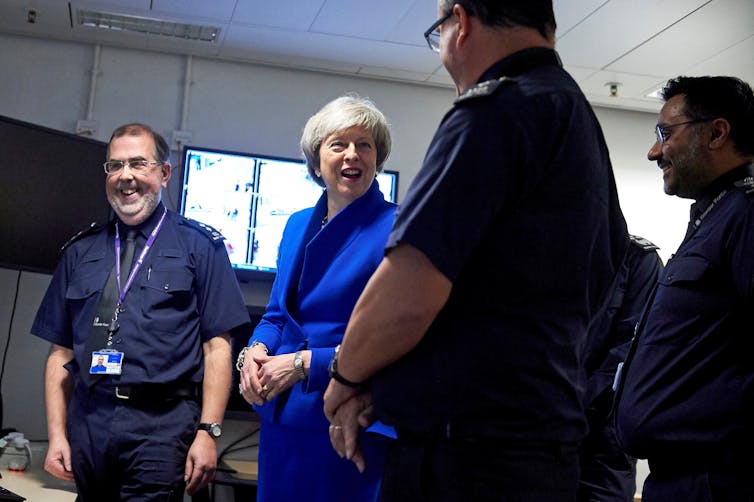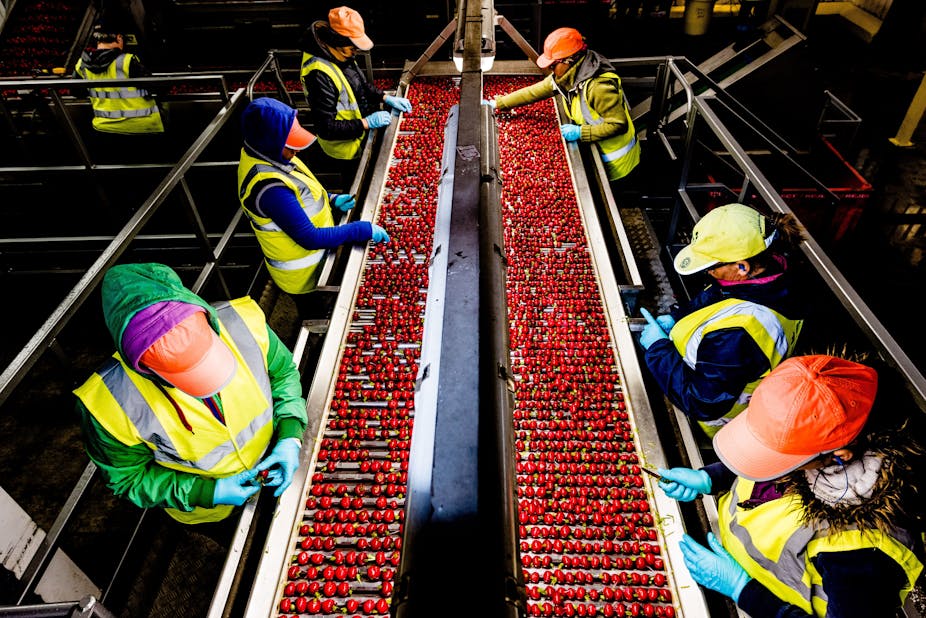As the UK heads to war with itself, the country got an early Christmas gift in the form of a long-awaited white paper on immigration. Touted by home secretary Sajid Javid as “the biggest change to our immigration system in a generation”, after reading the details, I beg to differ.
Much like the Brexit withdrawal agreement, the paper is a stop gap, full of nebulous transitionary measures with few concrete plans for Britain’s future labour market and no solutions to the shortages caused by ending free movement from the EU.
Its vision is for a migration system where the country somehow attracts highly skilled people despite a hostile environment, while the labour market relies on a churn of temporary workers with no rights and no concern over how that precariousness will lead to exploitation.
Reminiscent of a Tom and Jerry cartoon, the white paper reads like a battle between prime minister Theresa May’s hardline immigrant leanings and Javid’s incredulity with his Home Office brief, with the end product being no product at all.
The government’s objective for the last 18 years to attract the brightest and best remains, yet there are few new proposals for how to actually do this. The spousal income threshold of £18,600 remains, for example, despite findings from the University of Oxford’s Migration Observatory that it may be deterring tens of thousands of high-skilled workers.
Policy by inertia
The net migration target gets no explicit mention, suggesting it has been abandoned. Still, the ambition to reduce migration to the nebulous “sustainable levels” remains. With free movement ending, immigration is likely to decrease in any case – the “Brexodus” of EU citizens is already very much underway.
As recommended by the independent Migration Advisory Committee (MAC) in September, the government plans to scrap the resident labour market test which requires employers to ensure no EU resident is available or suitable before hiring somebody from outside the EU. Yet with free movement ending after Brexit, this protection measure is rather redundant. So both so-called “changes” are policy through inertia.
Javid may have shifted the rhetoric from reducing net migration as a “target” to an “ambition”, and from a “hostile” environment on immigration to a “compliant” one, but the end result is indistinguishable.
We’ll see new border controls including electronic travel authorisation for visitors and the return of exit controls. There will be new digital checking services which will make it easier for employers, landlords and public service providers to confirm immigration status. These are simply extra layers of the everyday bordering which caused the deplorable Windrush scandal in 2018 and led to countless problems of discrimination in the housing market, not to mention immeasurable wrongful deportations.
Much to the relief of business, a cap on the number of highly skilled migrants allowed to enter on Tier 2 visas will be scrapped. Still, salary thresholds look likely to continue to demarcate what the government deems as “skills”, and the government will consult on what that threshold will be – an exercise already conducted by the MAC. This is clearly a sop to the cabinet rows over a proposed £30,000 minimum income threshold – the latest front in the battle between May’s obsession with cutting immigration and the economic costs of doing so.
There will be new routes for skilled workers, including lowering the skills threshold. Presumably, this will be a new route under Tier 2, but with tiers getting no mention in the white paper, it’s unclear whether the points-based immigration system which has been in the place for the last ten years for non-EU migrants will be terminated altogether.
It’s temporary
What is genuinely new is the launch of a temporary short term route. Don’t get too excited, though, the government is at pains to stress this is transitionary and very much a stopgap until 2025. This forms part of the government’s ambition to make all non high-skilled migration strictly temporary, a vision of a constant churn of young, single migrants. While the intention may be to force companies to raise wages and improve working conditions in sectors which rely on EU labour, the result is likely to be an increase in the exploitation of temporary migrant workers, or sectors off-shoring certain jobs, or going under altogether.
May has long wanted to “break the link between temporary routes and permanent settlement”, as she put it back in 2010, and it looks like she’s finally got her wish. Workers on this route will need visas to come to work in the UK for a maximum of 12 months (meaning they don’t need to be counted in the net migration figures), although whether they’ll need a job offer for the visa remains unclear. But the certification system is long and bureaucratic and not suited to sectors looking for the flexibility to hire and fire people quickly on zero-hour contracts.

Temporary workers cannot bring dependants, extend their visa or transition to another visa. Temporary migration programmes have been heralded as a panacea across EU states satisfying the “no borders” and “no migrants” arguments. Yet much research demonstrates that temporary migrants are more vulnerable to exploitation in numerous ways, and usually create bonded labour or, in other words, modern slavery.
As alluded to in its Brexit white paper in July, the government has now proposed a UK-EU Youth Mobility Scheme (YMS) using the existing design as a basis.
The YMS allows young people aged between 18 and 30 from eight countries (mostly part of the Commonwealth) to come to work in the UK for up to two years without a job offer and the administrative headaches of sponsorship. Little is known about what work these YMS migrants do, because they don’t require employer sponsorship. The government believes most people engage in lower-skilled work, but my own research found that the majority of Australians on the scheme work in high-skilled occupations.
Read more: Youth mobility scheme after Brexit won't fill gaps left by end to free movement
The assumption of the entire white paper is that the UK will continue to be an attractive destination for migrants. In a hostile environment with a clear anti-immigration message, a probable decline in the economy and with London losing its attraction as a financial hub, this seems like a leap. One is left wondering why migrants would come to a country where they are clearly so unwelcome.

